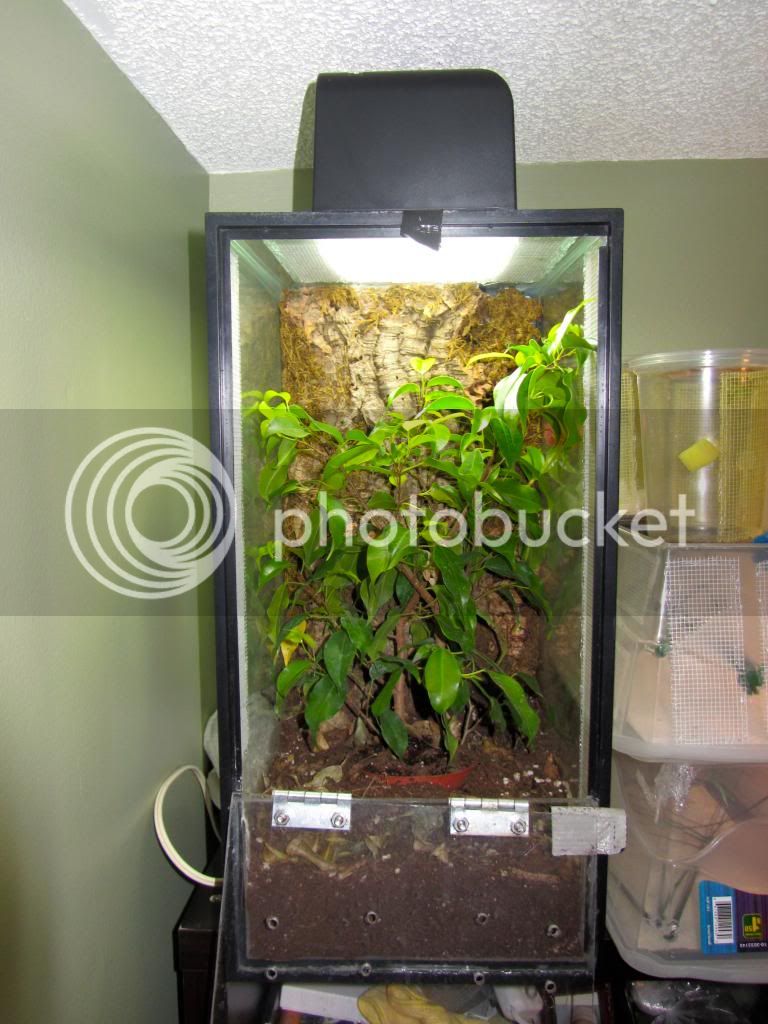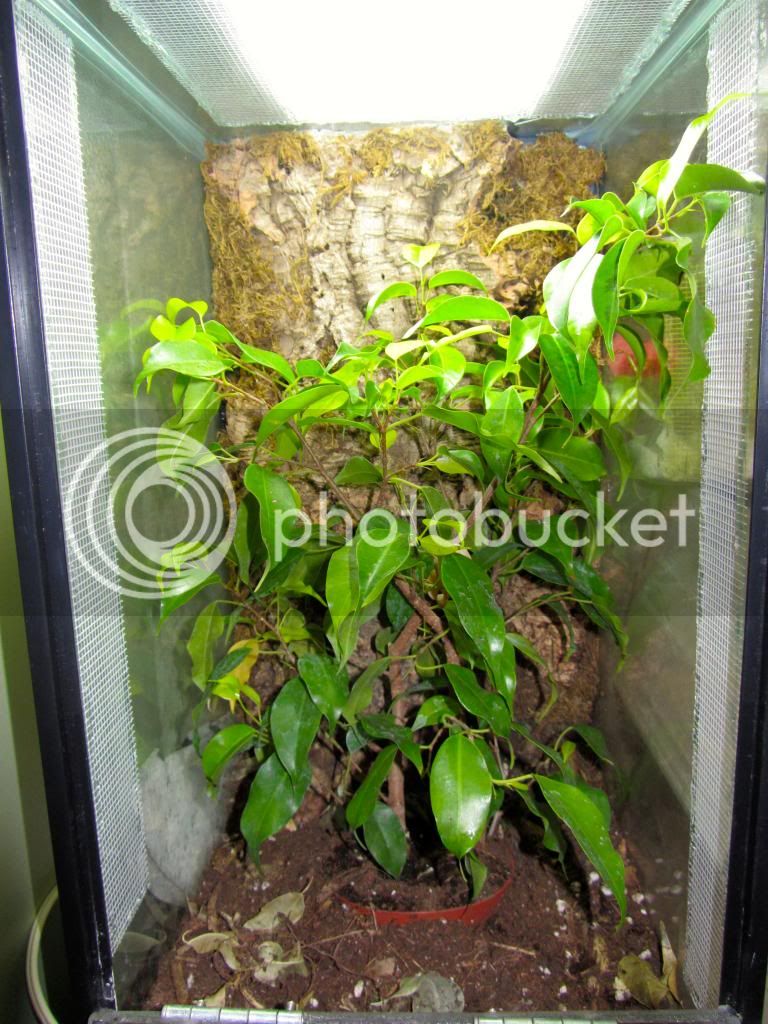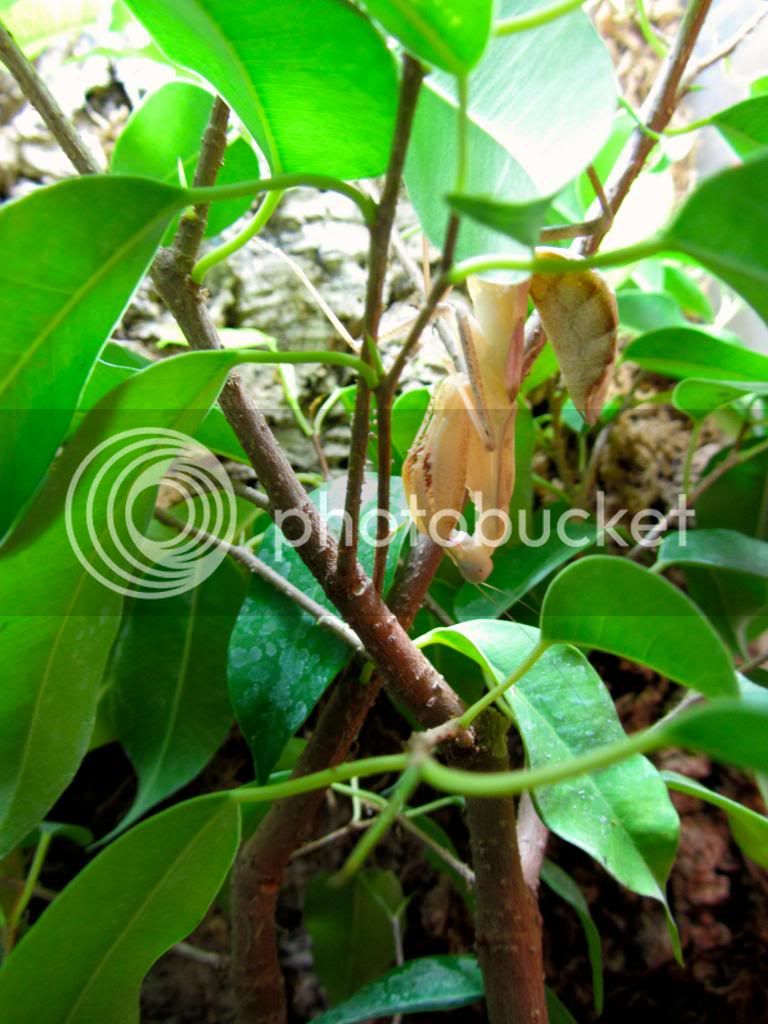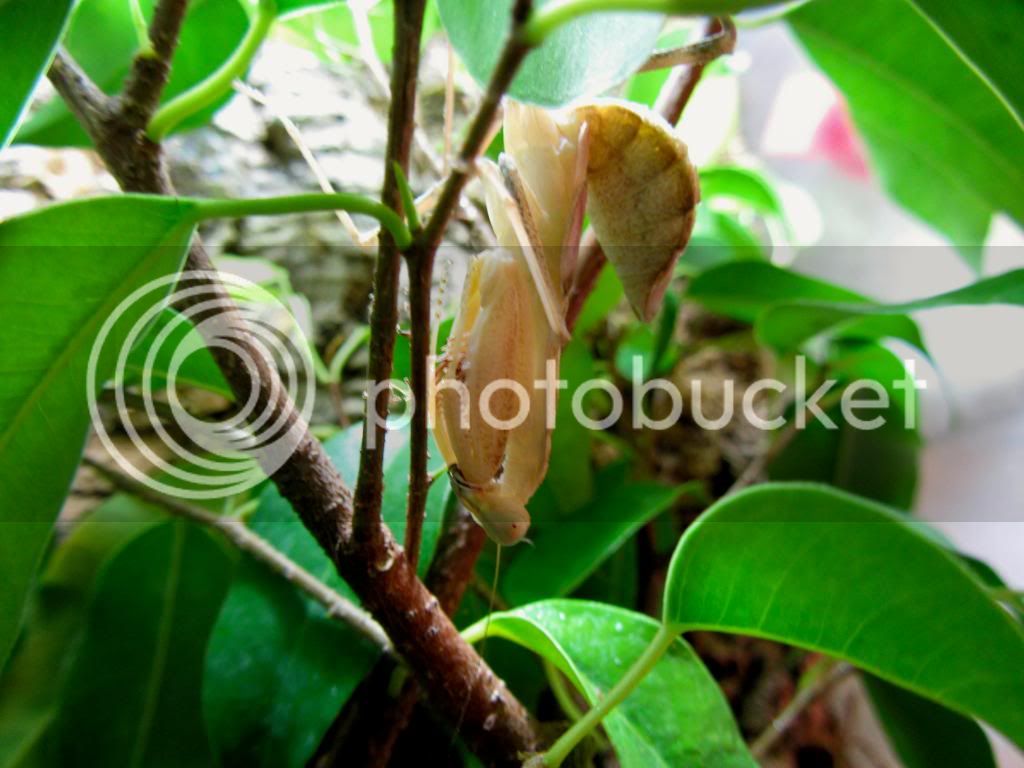Reptiliatus
Well-known member
- Joined
- Mar 5, 2011
- Messages
- 315
- Reaction score
- 26
Hey everyone,
So I have been keeping exotics for about 14 years now and a result of that passion is that I always have a few aquariums lying around ("empty tank syndrome", if you feel me ). I stumbled on a fellow tarantula breeder's video a few years ago and
). I stumbled on a fellow tarantula breeder's video a few years ago and
decided to apply a similar design to housing my mantids. The result is what you see here. I have made a few modifications however. Although the mantids will have ample climbing space with a large plant situated in the enclosure, I ho glue gunned plastic clear mesh to the roof, and side walls of the enclosure to ensure ample surface area. The roof is especially important for moulting. I would even suggest gluing a few sticks/branches over that for larger species.
So long as you are using low wattage florescent lighting, putting a lighting hood on the glass roof is no issue and the plants within will still receive plenty of ample light.
I highly recommend Ficus benjamina as a plant candidate for this style of enclosure but for those of you who don't want to risk it (after looking at your hand to discover there isn't a green thumb) you can go with good old Pothos. Hard to kill this species even if you wanted to xD. I actually don't remove them from their pots and just stick them into the bottom of the tank, covering the area around it with soil afterwards. Remember to give your plants a REALLY, REALLY good rinse before using them in your insect enclosures to wash off pesticides. I would even consider repotting them to be safe. For me I would by my small potted pothos in the summer, let them grow on my deck a few weeks (rain washes the chemicals away, etc) and then used them in my enclosure designs.
I will definitely be making a few more of these and I will be sure to share photo's as they come along. Yes the downside is that this type of enclosure is heavy, however they make a beautiful display to show off some of your favourite specimens and also do a great job of helping females feel secure and hidden to lay their ootheca.
Here is the video tutorial my buddy Rob put up on Youtube and below that link are a few photos of my "Mantis modification".
Enjoy and happy mantis keeping!
-Dayyan
My first enclosure housing a subadult female Sphodromantis sp. "Blue flash".

Here's a close up. You can see the mesh on the walls. The whole roof surface is covered in this material.

The happy resident camouflaging like she would back in Africa .
.


So I have been keeping exotics for about 14 years now and a result of that passion is that I always have a few aquariums lying around ("empty tank syndrome", if you feel me
decided to apply a similar design to housing my mantids. The result is what you see here. I have made a few modifications however. Although the mantids will have ample climbing space with a large plant situated in the enclosure, I ho glue gunned plastic clear mesh to the roof, and side walls of the enclosure to ensure ample surface area. The roof is especially important for moulting. I would even suggest gluing a few sticks/branches over that for larger species.
So long as you are using low wattage florescent lighting, putting a lighting hood on the glass roof is no issue and the plants within will still receive plenty of ample light.
I highly recommend Ficus benjamina as a plant candidate for this style of enclosure but for those of you who don't want to risk it (after looking at your hand to discover there isn't a green thumb) you can go with good old Pothos. Hard to kill this species even if you wanted to xD. I actually don't remove them from their pots and just stick them into the bottom of the tank, covering the area around it with soil afterwards. Remember to give your plants a REALLY, REALLY good rinse before using them in your insect enclosures to wash off pesticides. I would even consider repotting them to be safe. For me I would by my small potted pothos in the summer, let them grow on my deck a few weeks (rain washes the chemicals away, etc) and then used them in my enclosure designs.
I will definitely be making a few more of these and I will be sure to share photo's as they come along. Yes the downside is that this type of enclosure is heavy, however they make a beautiful display to show off some of your favourite specimens and also do a great job of helping females feel secure and hidden to lay their ootheca.
Here is the video tutorial my buddy Rob put up on Youtube and below that link are a few photos of my "Mantis modification".
Enjoy and happy mantis keeping!
-Dayyan
My first enclosure housing a subadult female Sphodromantis sp. "Blue flash".

Here's a close up. You can see the mesh on the walls. The whole roof surface is covered in this material.

The happy resident camouflaging like she would back in Africa


Last edited by a moderator:












































